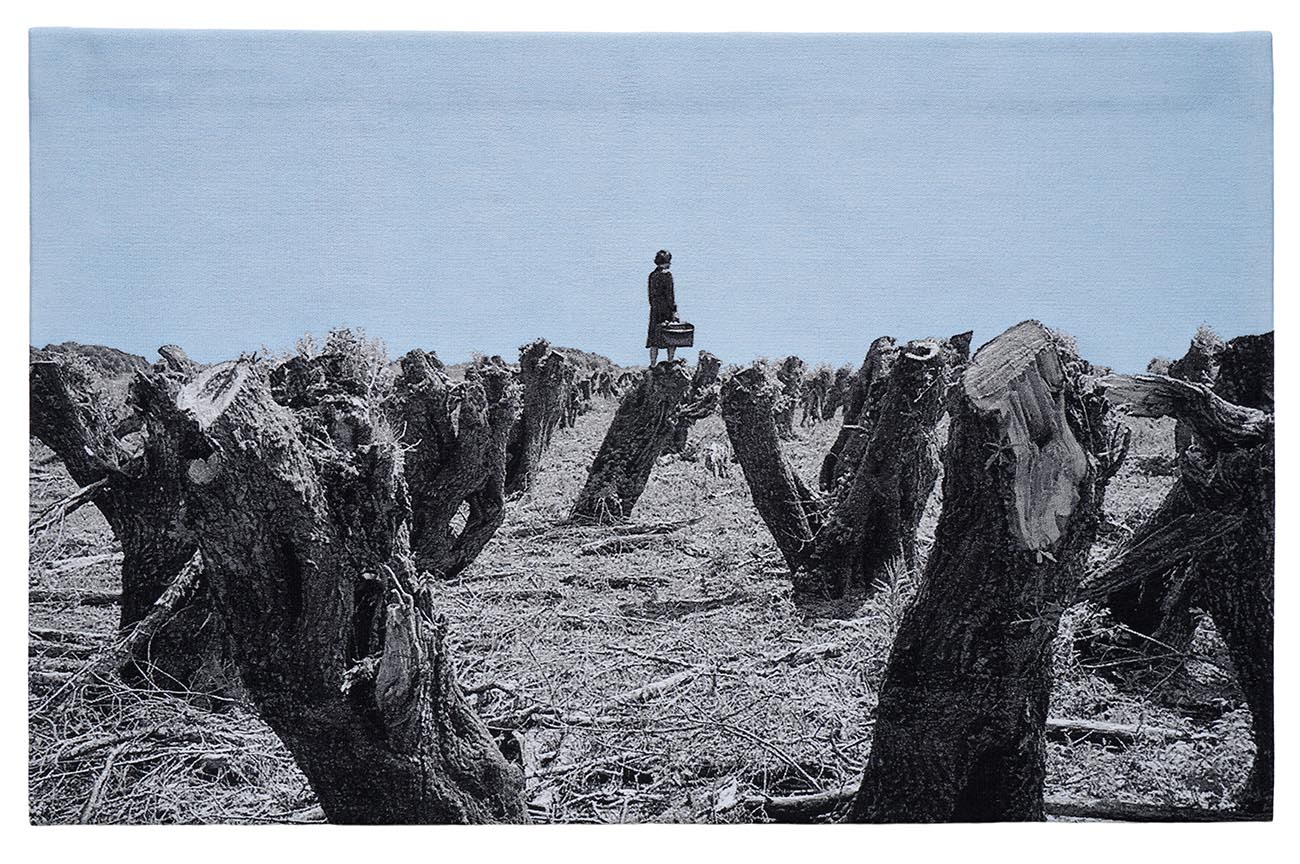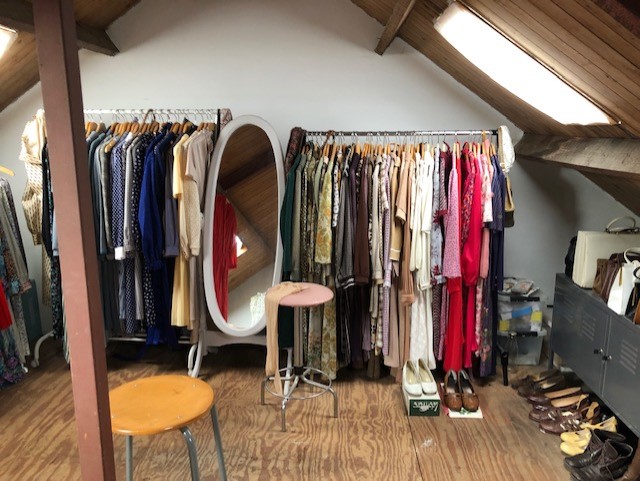Jenny Ymker uses herself as a model, and the world she shows is the world of her imagination, which is not necessarily feminine, but created from a feminine perspective. The Gobelins have been woven directly from colour photos. That the Gobelins are based on photos is obvious even to the untrained eye. The fabric of the Gobelins gives the pieces a grainy structure.
Tapestries used to be highly valued wall coverings depicting important historical, mythological or Biblical events. The iconography of the tapestries was of the greatest importance to the owner. They represented his glory and reason of existence. Ymker’s work is also about images that might be called iconic, but with an absurdist touch an a certain melancholy loneliness. The protagonist is always seen from behind or in profile, standing lonely in a situation that seems to last forever. The sky is deep, for instance, shows a field of cut-down tree trunks with the women sitting on one of them in the middle of the field, apparently on her way with a suitcase in her hand. Where is she travelling, and how does she move from one tree trunk to the next? In fact, these are nonsensical questions, for the image has her stand still. It is this absurd, indecisive moment, seeming to last forever and presented so clearly, which does give the work an iconic, or rather charismatic quality, for the work’s iconography is subject to different interpretations, whereas the image itself is easily remembered. It is strange and beautiful work, sometimes with mild humour mixing with the absurd, as is rarely seen in Dutch art. It shows a human being in constant confrontation with the world, while the world fails to respond in any way. The balanced beauty of the scenes, for instance the light shining through and the mirror in Serenade for a doll, is fixed to such an extent that it seems as if the images could only look like they actually do.
text Bertus Pieters
from Villa La Repubblica
Article "ArtCritic" 2025 by Hervé Lancelin: Link

